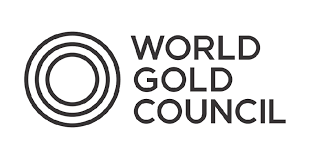Global gold demand remained muted in Q2 2018 at 964 tonnes (t), 4% below the same period in 2017, according to the World Gold Council’s latest Gold Demand Trends report. Slower inflows into gold-backed exchange-traded funds (ETFs) created a weak comparison against the highs of last year, contributing to the lowest H1 demand since 2009. Whilst China, the world’s largest gold market, saw a 7% rise in consumer demand.

ETF inflows continued, albeit at a much slower pace compared with the high levels seen in 2016 and 2017. Inflows were down 46% y-oy. However, European-listed funds saw decent inflows we believe due to uncertainty stemming from Italian elections and monetary policy outlook. In contrast, holdings of North American-listed funds fell by 30.6t as investors focused on domestic economic strength.
Despite the Q2 decline, H1 jewellery demand was scarcely changed at 1,031t. Weaker demand in India and the Middle East in Q2 was only partly offset by growth in China and the US, both up 5% compared with the previous year. Indian demand fell 8% y-o-y, crimped by higher local prices, as well as by seasonal and religious factors. Q2 2018 saw the seventh consecutive quarter of year-on-year growth in the technology sector, with demand up 2% to 83t.
Gold used in electronics continued to thrive, due to enduring demand for smartphones, games consoles and vehicles. H1 demand reached a three-year high of 165t. Global bar and coin investment was virtually unchanged at 248t. Stronger demand in China and Iran – fuelled by increasing geopolitical tensions with the US – were offset by falls in Turkey, India and Europe, where local prices remained elevated. Central banks added 89t of gold to global official reserves in Q2 2018, down 7% compared with Q2 2017. Cumulative H1 2018 purchases of 193t were the highest since 2015.
Alongside the familiar cast list of Russia, Turkey and Kazakhstan, the Reserve Bank of India returned to the market, albeit with only a very small purchase (+2.5t). Alistair Hewitt, Head of Market Intelligence at the World Gold Council, commented: “It’s interesting how investors around the world have reacted to some of the risks stalking financial markets. Weaker economic prospects and tumbling currencies off the back of heightened tensions with the US boosted Chinese and Iranian gold demand, while US investors shrugged off any geopolitical concerns. Demand from tech companies continued to grow, with H1 demand reaching a three-year high, while economic growth boosted jewellery demand in the US with Q2 demand hitting a ten-year high.”
The total supply of gold increased by 3% in Q2 2018 to 1,120t, supported by increased mine production and recycling growth. Mine production in Q2 saw a rise of 3% to 836t, the highest Q2 on record, as projects in Russia, Indonesia and Canada continued to ramp-up. Gold recycling also grew, as currency weakness in India, Turkey and Iran boosted local gold prices and encouraged consumers to lock in profits from their holdings.
The key findings included in the Gold Demand Trends Q2 2018 report are as follows:
Be the first to comment